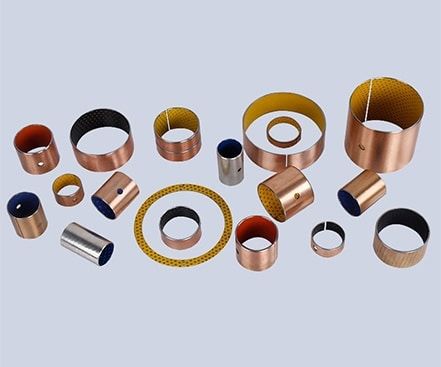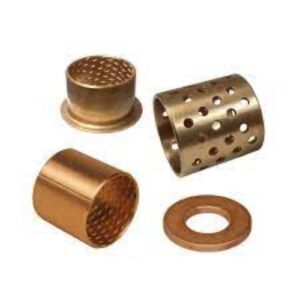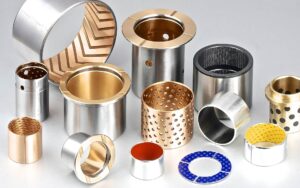Dry Bearings
- ISO 9001: 2015 Certified Factory
- DU and DX Dry Bearing
- Various Materials like PTFE and POM
- Low MOQ and Customizable
Dry bearings are mostly stand for DU bushes, its a self lube bushings.
Bushing MFG can manufacture dry bearings out of PTFE, bronze/brass, and all kinds of materials with applications to various industries, like automation, pumps, agriculture, hydraulic systems, transmission and more.
Contact our sales assistant for the dry bearings catalogue.
Request a Quotation for Your Dry Bearings
Bushing MFG accepts orders for any type of Dry Bearing made from special materials or custom bushing with a minimum quantity required.
Related Products
Dry Bearings – Things to Know
What is a Dry Bearing?
Dry bearings are bearings that operate without the need for any kind of wet lubrication. While most bearings require some sort of lubrication in order to function, including oilless bearings and self-lubricating bearings, dry bearings operate completely dry. This is because the materials that they are made of are extremely smooth and resistant to wear. Dry bearings are the simplest kind of bearing that can be used.

Dry Bearings
How Do Dry Bearings Work?
Dry bearings work just the same as any other kind of bearing, except without the need for lubrication. Similar to self-lubricating bearings and oilless bearings, dry bearings require almost no maintenance at all in order to function. Meanwhile, traditional metal bearings require frequent lubrication and maintenance which costs time and money. The main difference between self-lubricating bearings and dry bearings is that self-lubricated bearings are impregnated with lubrication before installment, while dry bearings are never lubricated at all.
This makes them very simple and user-friendly, and for this reason, they are one of the most common types of bearings in existence. Their low coefficient of friction is what enables them to operate in applications without any form of lubrication, but they are mainly only used in low pressure and low-speed applications. Molybdenum disulfide and graphite are the two main materials used for the production of dry bearings, and they are naturally porous and smooth materials that allow for the easy movement of parts.
Advantages of Dry Bearings
The main advantage of dry bearing over other kinds of bearings is that they can run in very high-temperature applications. While other lubrications only work below a certain temperature, dry bearings are highly heat-resistant and can withstand extremely high temperatures. This makes them more versatile as a component and extends their list of possible applications. Dry bearings are ideal for high load, low speed, and possibly high-temperature applications. When used in the proper applications, dry bearings extend machine life, reduce noise, increase efficiency, and save money on maintenance costs.
What are Dry Bearings Used For?
Dry bearings are used in some different applications than traditional, lubricated bearings because of their unique properties. As bearings that require very little maintenance and operate in very high temperatures, dry bearings can be very important to your machine. Some common uses for dry lubricants and dry bearings include coating threads to prevent seizure and enable release, coating shafts to prevent binding and enable release, and lubricating surfaces that experience high pressures and low speeds. Common applications for dry bearings include domestic appliances, electro-mechanical devices, and high-pressure manufacturing equipment.
Get an Instant Quote



